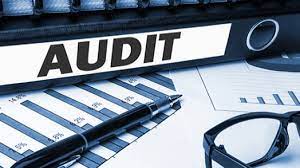Audit Procedures Methods to Obtain Reliable Audit Evidence
The cornerstone of a successful audit lies in the collection of adequate and appropriate audit evidence. Various audit procedures, each with its unique strengths and applications, form the toolkit auditors use to achieve this goal. From inspection to inquiry, these methodologies enable auditors to validate financial statements and assess the financial health of an organization. In this article, we delve into these procedures, exploring how they contribute to the comprehensive evaluation of an entity’s financial assertions.
Inspection
Inspection involves the physical examination of tangible assets, documents, and records. This method is effective for verifying the existence and condition of physical assets like inventory and fixed assets. It also extends to examining documentation, such as contracts, to validate transactions and balances. For instance, scrutinizing loan agreements can provide evidence regarding interest rates, loan balances, and repayment terms.
Observation
Observation entails watching a process or procedure being performed by others. It’s particularly useful in assessing the implementation of complex or critical procedures, like the inventory counting process. By observing, auditors can gauge whether procedures are carried out as described in the entity’s policies and whether they are effective.
External Confirmation
This procedure involves obtaining information directly from third parties. External confirmations serve as a robust form of evidence, especially when verifying account balances and transactions. For example, sending confirmation requests to banks helps verify cash balances, while confirmations from suppliers can corroborate accounts payable balances.
Recalculation
Recalculation is a method where the auditor independently verifies numerical information. It could involve rechecking a sample of ledger entries or recalculating interest calculations. This procedure helps to ensure that financial records have been accurately maintained.
Re-Performance
Re-performance goes a step beyond recalculation. It involves the auditor independently executing controls or procedures that were originally performed as part of the entity’s internal controls. For instance, re-performing the aging analysis of accounts receivable can provide assurance regarding the adequacy of allowance for doubtful accounts.
Analytical Procedures
Analytical procedures involve evaluating financial information by studying plausible relationships among both financial and non-financial data. It includes ratio analysis, trend analysis, and variance analysis. These procedures can identify inconsistencies or unusual transactions that might indicate material misstatements. For instance, comparing current year sales trends with previous years can reveal irregularities or deviations that merit further investigation.
Inquiry
Inquiry involves seeking information from knowledgeable persons within or outside the entity. It’s an essential part of every audit, used for understanding business processes, gathering information about specific transactions, or understanding management’s judgment on accounting estimates. However, inquiry alone is seldom sufficient audit evidence and often needs to be corroborated with other procedures.
Implementing These Procedures
The application of these procedures depends on the audit’s objectives, the nature of the financial statements, and the identified risks of material misstatement. An auditor must exercise professional judgment to determine which procedure or combination of procedures will yield the most reliable and relevant evidence.
Challenges and Considerations
One of the primary challenges in applying these procedures is ensuring that the evidence obtained is sufficient and appropriate. Auditors must also be aware of the limitations of each method. For example, observation provides evidence at a specific point in time, and inquiry relies on the honesty and knowledge of the respondent.
Conclusion
Audit procedures are the backbone of the audit process, providing the necessary evidence to form an opinion on the financial statements. The selection and effective implementation of these procedures require an auditor’s professional judgment, understanding of the business, and an awareness of the risks involved. Through a mix of inspection, observation, external confirmation, recalculation, re-performance, analytical procedures, and inquiry, auditors can gather a holistic and reliable body of evidence. This evidence forms the foundation upon which audit opinions are built, ensuring the integrity and reliability of financial reporting.
